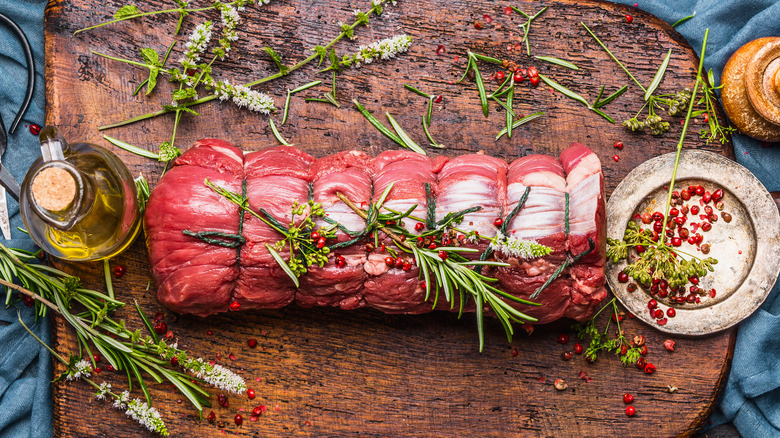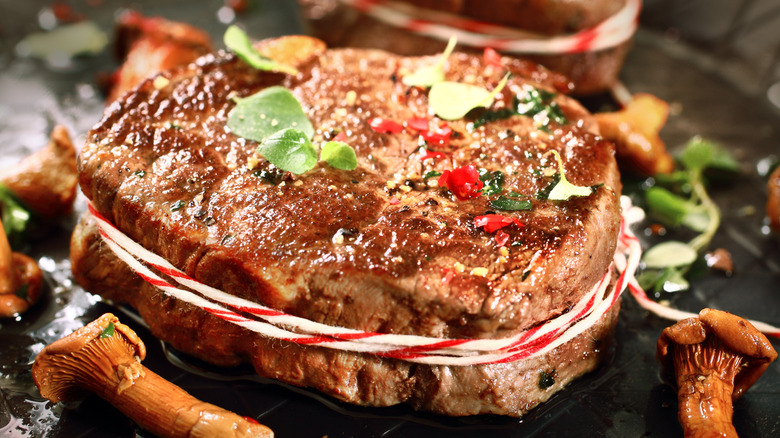Why It's Important To Tie Up Beef Tenderloin When Cooking It
Beef tenderloin, or filet mignon as it's known when cut into steaks, is one of the most highly desired cuts of beef out there. Since it's taken from the cow's spine, it's a stretch of muscle that does little to no heavy lifting and has a buttery soft texture. Unfortunately, the tenderness of this cut of beef also makes it one of the most expensive options at a butcher or grocery store, according to Clover Meadows Beef. It's also one of the most expensive at a steakhouse as well and can cost between $65 and $120 per pound, per True Organic Beef.
When you're paying that much for any cut of meat, it's important to make sure that it's cooked correctly. According to Beef Nutrition, the tenderloin is one of the leanest cuts of meat available on the cow, which means that it is easy to overcook it and dry it out. Because the tenderloin is also a teardrop shape that narrows on one end, that section might overcook while the other is still being roasted. Luckily, there is an easy solution that will help both of these problems.
Tying up tenderloin helps it cook more evenly
There are plenty of good reasons for tying up a beef tenderloin before cooking it that go well beyond looking fancy. Dressing up your tenderloin in some butcher's twine might feel like showing off, but in reality, it just shows you value this fine cut of meat. Kitchn notes that tying up a beef tenderloin can help solve the main issue of uneven cooking. By tucking the more narrow end underneath the thicker end and forming a consistent round, every part of the meat will finish cooking at the same time. Chef Edward Leonard of LeCordon Bleu says that even if you've trimmed off that more narrow section of meat, tying the tenderloin can still help it maintain its shape throughout the cooking process and bring it all to one even temperature.
Food Republic says that meat has a tendency to spread out and release its juices while it cooks as well. It says tying up your meat will prevent it from spreading and keep your meat nice and juicy. According to Kitchn, this method will help single filet mignon steaks as well.
So, the next time you're preparing a roast, don't forget to tie it up first. Savéur and LeCordon Bleu both have great visual guides to help understand the process. If you don't have any butcher's twine around, Baking Kneads says you can also use toothpicks, unflavored dental floss, or aluminum foil in a pinch.

